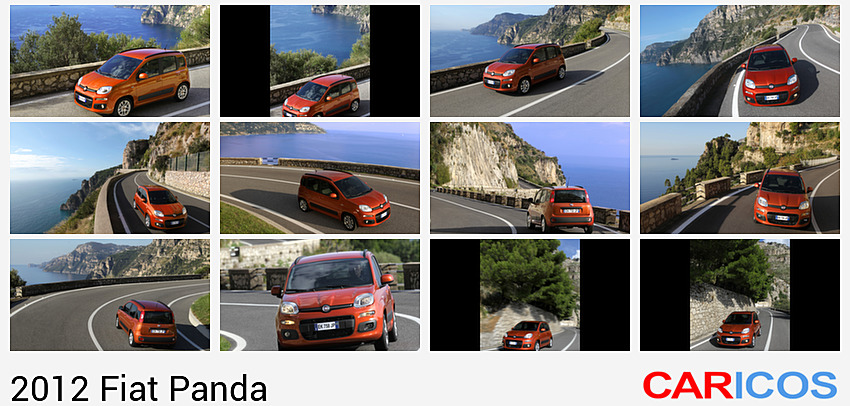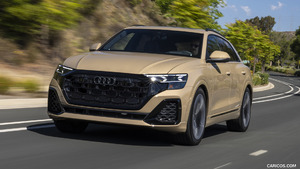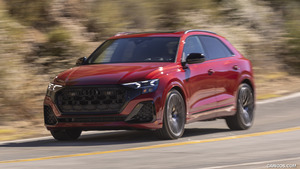2012 Fiat Panda
The new Panda is the consistent evolution of an invention that in its 31-year history has always been likeable, versatile and easy to use. The Panda is all this and something more: a brand rich in strong rational and emotional value, a car of which more than 6.4 million units have been produced, and which has won 16 million drivers different from one another in terms of taste, age, nationality and background. A best seller which has significantly contributed to the undisputed leadership of Fiat in this segment: from the first 600 to the 500, from the 126 to the first Panda, from the Cinquecento to the Seicento, from the second generation Panda (2003) to the new 500 launched in 2007. Fiat has always been the point of reference of the city-car segment in Europe due to its unrivalled expertise developed in the continental cities.
The third generation of the Panda model springs forth from this technical and human heritage. It comes of age offering more quality in terms of space, comfort, functionality, technology and safety features. It combines the best features of the first- and second-generation cars. This intelligent vehicle is ideal for those wanting to combine the practical handling of a city car with the space and comfort of a five-door compact car. All this is further enhanced by a modern and harmonious look which exalts that pleasant appearance of the Panda that by now has become a part of our collective memory just like other objects resulting from Italian creativity, from the Fiat 500 to the Vespa Piaggio, Moka Bialetti and Cubo by Bruno Munari. Unique products that can neither be judged by their appearance nor just represent a good engineering exercise. Instead they are powerful alchemies, innovative in their design and concept that redefine the common points of reference and comparison. When this happens, essential masterpieces in the history of industry are born. The Fiat Panda is one of these.
Simply Panda
Panda is the byword for substance, practicality and usefulness. There is a concept of beauty connected to making all of this visible and perceptible, a concept pursued throughout the new Panda design procedure. Now at its third generation, the Panda is improving each of its elements both functionally and in attention to detail. The result is of great overall harmony, due to applying signs consistent with one another that increases its usability and pleasing design values.
Starting from the concept that every one of us has different requirements, the new car makes maximum use of the interior space, rationalising the dimensions. Although continuing to be a very compact car, the Panda has grown just a few centimetres to ensure the attainment of the highest standards of safety and improve the generous level of passenger room.
With a length of 365 centimetres, a width of 164 and a height of 155, and with five doors, the new Panda can comfortably accommodate up to five people and it has one of the most spacious boots in its segment: 225 litres which become 260 with the sliding rear seat in the fully forward position up to the point of reaching 870 litres with the backrest of the rear seats folded down.
Fiat Panda offers maximum freedom of use due to the modularity of its space, the numerous storage compartments and a wide array of front and rear seat configurations. Besides, every one of us has our own lifestyle, a personal relationship with our own objects, our own way of distributing them in space. And of finding them again. So in this sense the new model is a place to fill in an entirely personal way, but at the same time it is a place that you are glad to share with others, just as if it were a cozy Italian home full of warmth and generosity. The exteriors are also distinguished by an unmistakable "Italian style", a "Mediterranean" stylistic language where the smooth shapes give it an appealing, solid and protective look.
More Panda
The new Panda is generous and intelligent because it makes innovative features that simplify and improve life on-board accessible to everyone. After all, these days people who choose a compact car do not want to forgo the technology generally reserved for cars of higher segments. The Panda manages to accommodate these needs with the need for sustainable, safe mobility that is accessible both in terms of price and running costs. Thus it combines the best features of the first- and second-generation cars. This is a new intelligent solution especially in such uncertain economic times.
Specifically, behind that fun and confident appearance, the Panda offers sophisticated technological solutions which are nonetheless straightforward to use and satisfy both the concrete needs of everyday mobility as well as the growing social awareness of the environment and safety issues. Here then are two new highly valuable devices which buyers would only expect to find on cars from superior segments, namely: the "Low Speed Collision Mitigation" braking system and the "Blue&Me TomTom 2 LIVE" navigation system. Contents such as Start&Stop, Gear Shift Indicator (GSI), ecoDrive and ECO mode of the TwinAir Turbo engine are added to these. Acronyms which are now part of the standard terminology that Fiat has contributed to create and develop and which are now grouped together in "Air Technologies", the Fiat brand that identifies the low environmental impact technologies which team eco-friendliness with driving satisfaction.
That philosophy led to defining the range of engines, all champions of fuel consumption, emissions and performance. Standing out are the brand new two-cylinder engines equipped with the Start&Stop system as standard: 85 HP 0.9 TwinAir Turbo, named "International Engine of the Year 2011", and the brand new 65 HP 0.9 aspirated TwinAir, adopted for the first time. The renewed 69 HP 1.2 Fire petrol engine and the 75 HP 1.3 Multijet II, also with Start&Stop supplied standard, complete the range of engines.
At its launch, the new model is available with front-wheel drive - then the Panda 4x4 will make its debut - and offers 3 trim levels (Pop, Easy and Lounge), 10 body colours, 9 interior environments, 2 hub caps and 2 14" and 15" alloy wheels. The new contents include the "Blue&Me TomTom LIVE" that combines the advantages of an infotainment system which is integrated and connected with those of a portable navigation system, opening the doors to connectivity. Afterwards the innovative optional LSCM (Low Speed Collision Mitigation) braking system will become available. It can detect an obstacle present nearby and automatically brake at speeds slower than 30 km/h.
In short, everything is a whole lot easier with Panda. It is easier to move, to park, to find the right amount of space and to adjust the vehicle to suit you, so that you can feel at ease and interact with others. Important solutions that are expressed in a philosophy of life. Besides, before being a car the Panda is an idea that has generated another way of experiencing a car in total freedom. That's because today as always, whoever chooses a Panda is free from the conventional mould, fashions and classifications. In a sense, you could say that it is a non-conformist car, which from its very first generation was able to astonish with simple yet not obvious solutions. It is precisely its vocation for structural and constructive simplicity that now allows it to further evolve without ever losing its true nature of revolutionary car. Suffice it to say that it was the first car of its segment to bear the prestigious title of "Car of the Year 2004". It was the first compact to feature a diesel engine (1986) and it was the first to offer both four-wheel drive (1983) and a range of eco-friendly engines designed to limit fuel consumption (the Panda Elettra was introduced in 1990, one of the first electric cars). It was the first 4x4 city car to reach Everest's base camp at an altitude of 5,200 metres (2004).
Totally Italian
Icon of design and Italian know-how, the new Panda is the evolution of a successful model and destined to confirm Fiat's position as undisputed leader in the city-car category. For this reason, Fiat Group Automobiles has set its sights on ensuring top quality throughout the entire product development process and its engineering. Such a design could only be manufactured in an equally advanced factory, one redesigned with the same criteria. This is why the new model is made in Pomigliano d'Arco, near Naples. The industrial area has been entirely refurbished for the event with new systems, particularly in the body-in-white and assembly sector, and an innovative "Quality Centre". More than being simply the most advanced Fiat has, these new systems are also among the most advanced in the world.
The Giambattista Vico plant was brought to technological and organisational excellence in a record time of 12 months and with a total investment of Euro 800 million in both machinery and people, for whom to the present day 200 thousand hours of training have been put in.
The result is a car that represents the passion and the design and building ability of a brand born over a century ago. The heritage of Fiat is all this and more, combined with the commitment and professional pride of thousands of people - engineers, factory workers, executives - who have followed one another over the years in the factories and in the offices.
A 31-year success story
The Panda went down in automotive history in 1980 when Fiat presented the first model at the Geneva Motor Show, the result of research started in 1976. With the Panda an idea was born, an idea which has generated another way of experiencing a car: simple, democratic, fun and at the same time revolutionary owing to its intuitive and brilliant solutions. It was the first generation of one of the most highly appreciated European city cars that never ceases to amaze. In a three-year period it was enriched with the textile sun-roof version and the four-wheel drive version, and in July 1984 the one millionth Panda produced after only four years from its birth arrived.
Its success was renewed in 1986 with the second series of the first generation. The engines were one of the major innovations. The new 34 HP and 45 HP FIRE 769cc and 999cc replaced the 652cc and 903cc. The diesel engine was also introduced. But what did not change was the customer's love for this car. Over the next two years it surpassed the threshold of 2 million units produced, and in 1990 the range grew, enriched with the futuristic Panda Elettra, the first version fitted with an electric motor. The first-generation Panda was produced up until 2003. Up until the very last minute it held one of the top spots in the rankings of utility cars purchased.
The moment of the second generation arrived in September 2003. The Fiat Panda was launched on the market with a design that interpreted the new style trends. It abandoned the three-door bodywork and grew 13 centimetres longer and a dozen wider to make room for a comfortable five-door MPV configuration. And it was immediately a hit. It was the first car in this segment to be awarded the prestigious "Car of The Year 2004" title. The model became a downright "platform" on which Fiat created an entire family of cars boasting technology and attention to detail worthy of a higher category. In 2007 the one millionth second generation unit rolled off the line. About 6 million first and second-generation Pandas were produced.
Now it is the turn of the third-generation Fiat Panda to continue down this path embarked on 31 years ago on the roads of the world.





















